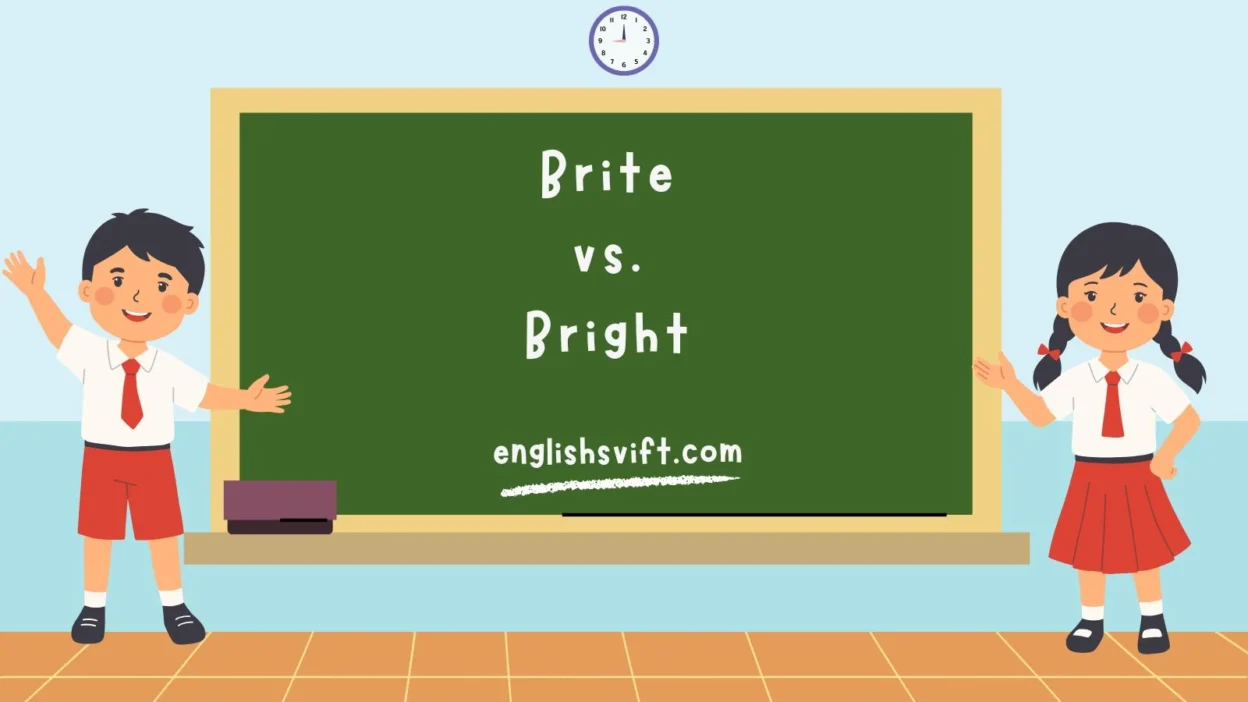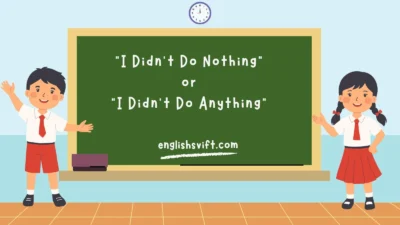Language evolves. Words change, spellings shift, and sometimes creative industries give birth to completely new variants. That’s exactly the story of “Brite” vs. “Bright.”
If you’ve ever wondered whether brite is a “real word” or simply a modern twist on bright, you’re not alone. From Light Brite toys to Scotch-Brite cleaning pads and even “brite beer” in brewing, this spelling pops up everywhere.
But does brite mean the same thing as bright? Should you ever use it in formal writing, or is it only acceptable in brand names and marketing?
Let’s break it down with history, dictionary insights, grammar explanations, and plenty of real-life examples.
Brite vs. Bright: What’s the Real Difference?
At the core:
- Bright is the correct, dictionary-approved spelling in English.
- Brite is a non-standard spelling often used in brands, marketing, and creative industries.
They’re pronounced exactly the same: /braɪt/.
But they differ in usage, formality, and meaning depending on context.
| Feature | Bright | Brite |
| Dictionary-approved? | ✅ Yes | ❌ No |
| Usage | Everyday English, formal & informal | Branding, marketing, stylized spellings |
| Meaning | Light, intelligence, positivity | Same as “bright” but used as an alternative spelling |
| Grammar Role | Adjective, noun | Proper noun (brand), stylized variant |
| Formal Writing | Correct | Incorrect |
| Informal Branding | Rare | Common (Scotch-Brite, BriteSmile, Lite-Brite) |
The Correct Spelling: Bright or Brite?
When you’re writing essays, resumes, academic papers, or business proposals, the correct form is always bright.
For example:
- ✅ She has a bright smile.
- ✅ The sun is bright this afternoon.
- ❌ She has a brite smile. (only acceptable in brand names)
So, unless you’re referencing a product like Scotch-Brite, stick with bright.
Origin and History of the Word “Bright” in English
The word bright has deep historical roots:
- Old English: beorht (shining, splendid)
- Proto-Germanic: berhtaz (brightness, radiance)
- Old High German: beraht
- Old Norse: bjartr
- Gothic: bairhts
Over centuries, it became associated not just with light but also with intelligence, clarity, and positivity.
Shakespeare, for example, often used bright in metaphors for stars, eyes, and love.
How “Brite” Emerged as a Modern Alternative
“Brite” isn’t an ancient spelling—it’s a modern invention.
The earliest commercial use dates back to 1905 with Star-Brite Metal Polish.
Since then, the spelling has been used in:
- Marketing – to stand out with catchy, simple, youthful branding
- Products – Scotch-Brite, Lite-Brite, BriteSmile
- Creative industries – logos, advertising, startups
In short, brite is a stylistic movement in spelling, not a dictionary word.
Dictionary Status: Is “Brite” an Accepted Word?
Let’s check major dictionaries:
| Dictionary | Entry for Bright | Entry for Brite |
| Merriam-Webster | ✅ Yes | ❌ No |
| Oxford English Dictionary | ✅ Yes | ❌ No |
| Grammarist.com (by Candace Osmond) | ✅ Discusses bright | ✅ Notes “brite” is non-standard |
| Urban Dictionary | ✅ Yes | ✅ Informal / slangy entry |
So:
- Bright is fully recognized.
- Brite is debated, but mostly in informal or brand-related contexts.
Phonetics and Pronunciation: /braɪt/ Sounds the Same
Both spellings—bright and brite—are pronounced the same:
- IPA: /braɪt/
- Sounds like: fight, light, right
Example homophones:
| Word | Pronunciation | Notes |
| Bright | /braɪt/ | Standard English |
| Brite | /braɪt/ | Alternative spelling |
| Bryte (rare) | /braɪt/ | Stylized creative spelling |
This identical sound is why confusion often arises.
Bright as an Adjective: Meanings and Usage
Bright functions as both an adjective and a noun.
Adjective meanings:
- Light: a bright sun
- Intelligent: a bright student
- Cheerful: a bright mood
- Promising: a bright future
| Meaning | Example Sentence |
| Visual brightness | The headlights were too bright. |
| Intellectual brightness | Her son made the honor roll—he’s very bright. |
| Emotional brightness | She greeted me with a bright smile. |
| Future / hopefulness | The company has a bright future. |
Brite as a Brand Spelling: Creative Identity in Marketing
Companies adopt brite to:
- Simplify spelling
- Create a distinctive brand identity
- Appeal to younger or modern audiences
Examples:
- Lite-Brite (1967): A children’s toy with glowing colored pegs
- Scotch-Brite (3M): Cleaning pads and sponges
- BriteSmile: Teeth-whitening services
- Brite Energy: Solar energy company
- Rainbow Brite: A classic animated character
Branding loves brite because it feels fresh, innovative, and memorable.
Emotional & Visual Meanings of “Bright”
When we say “bright,” it can reflect multiple layers:
- Visual: sunshine, colors, headlights
- Intellectual: a smart student
- Emotional: cheerfulness, positivity
- Future-oriented: hope, opportunity
Idioms with “bright”:
- Look on the bright side
- Bright and early
- The future looks bright
How Dictionaries Describe “Bright” vs. “Brite”
Here’s a comparison:
| Aspect | Bright | Brite |
| Definition | Gives off light, intelligent, cheerful | Non-standard spelling, used in branding |
| Usage | Everyday English | Informal, brands, creative industries |
| Example | She wore a bright yellow jacket. | He bought Scotch-Brite sponges. |
Real-Life Usage: From Light Brite to Rainbow Brite
You’ve likely seen “brite” in pop culture:
- Lite-Brite (1967): A Hasbro toy with glowing peg designs
- Rainbow Brite (1980s): A beloved animated character
- Kwik-Brite: A household cleaner
- Brite Futures (NGO): Youth mentorship programs
These brands shaped public recognition of brite as a playful spelling.
Branding Examples: Scotch-Brite, BriteSmile, Brite Energy
| Brand | Industry | Meaning Behind the Name |
| Scotch-Brite | Cleaning products (3M) | Brightening, effective cleaning |
| BriteSmile | Dental | Bright white teeth |
| Brite Energy | Renewable energy | Bright future with solar power |
| BriteBrush | Kids’ toothbrush | Fun, gamified brushing |
| Rainbow Brite | Entertainment | Colorful, cheerful identity |
Standard vs. Informal Usage in Writing
- Formal writing (essays, business, academia): Always use bright.
- Informal communication (texting, branding, creative writing): brite might appear, but it’s not standard.
Think of brite as a stylistic choice, not a grammatical one.
Academic vs. Creative Contexts: When to Use Each
| Context | Correct Usage |
| Academic essay | Bright |
| Business proposal | Bright |
| Brand names | Brite |
| Creative ads | Brite (if stylistic) |
| Poetry / Literature | Bright |
| Casual texting | brite (informal, not recommended) |
The Brewing Connection: Brite Beer, Barley, and Hops
Interestingly, brite appears in the brewing industry.
- “Brite tank” = a vessel where beer is clarified and carbonated.
- “Brite beer” = beer that’s finished, clear, and ready to package.
This usage is specific to brewing terminology.
The Role of “Bright” in Literature and Poetry
Writers like Shakespeare, poets, and novelists used bright to symbolize:
- Purity
- Love
- Divine qualities
- Emotional vitality
Example:
“The stars are bright with heavenly fire.”
Brite does not appear in literature—it’s modern, brand-driven.
Alternative Spellings and Language Evolution
Language is dynamic and flexible.
- Just as “lite” became common alongside “light,”
- “brite” became trendy in branding.
It reflects phonetic spelling trends and visual simplification.
Visual Branding and Stylistic Simplification Trends
Brands prefer brite because:
- Shorter, sharper, easier to print
- Looks modern and sleek
- Appeals to youth culture
- Stands out in crowded markets
Bright in Everyday Expressions and Idioms
| Idiom | Meaning |
| Bright and early | Very early in the morning |
| Look on the bright side | Focus on positivity |
| Bright spark | Intelligent person |
| Bright-eyed and bushy-tailed | Energetic and eager |
| Future looks bright | Promising opportunities ahead |
Confusion in Digital Writing and Autocorrect Errors
In digital communication:
- Autocorrect may flag brite as a mistake.
- Students sometimes misuse it in essays.
- Proofreaders often mark it as an error in professional documents.
Bright Future vs. Brite Futures: Usage in Nonprofits and Education
- Bright future: Standard phrase meaning “hopeful outlook.”
- Brite Futures: NGO name for youth education and mentorship.
Both sound the same, but one is standard English, the other is branding.
Proper Noun vs. Common Word: Grammar Implications
- Bright (common word): adjective, noun.
- Brite (proper noun): brand name, trademark.
Tables Comparing Bright vs. Brite in Different Contexts
| Context | Correct Form | Notes |
| Grammar | Bright | Adjective, noun |
| Marketing | Brite | Branding identity |
| Literature | Bright | Symbolic, poetic |
| Brewing | Brite | Technical brewing term |
| Dictionaries | Bright | Recognized |
| Scrabble | Bright | Acceptable |
| Urban Dictionary | Brite | Informal entry |
Quick Tips for Correct Usage in Formal Writing
- Always use bright in essays, emails, and resumes.
- Only use brite when referencing a specific brand or product.
- If in doubt, choose bright.
Final Thoughts
Both words sound the same.
But only bright is correct in standard English.
Brite has its place in branding, brewing, and pop culture.
If you’re writing for school, work, or professional contexts: bright.
If you’re naming a product or writing creatively: brite might be your stylistic edge.
FAQs
Q1. Is “brite” a real word?
Not in standard English—it’s mostly used in branding and creative spellings.
Q2. Can I use “brite” in an essay?
No. Always use bright in formal or academic writing.
Q3. Why do companies use “brite” instead of “bright”?
Because it looks fresh, catchy, and distinctive for marketing.
Q4. What does “brite beer” mean?
In brewing, it refers to finished, clear beer ready for packaging.
Q5. Which is correct in dictionaries—brite or bright?
Only bright is listed as correct in major dictionaries.



